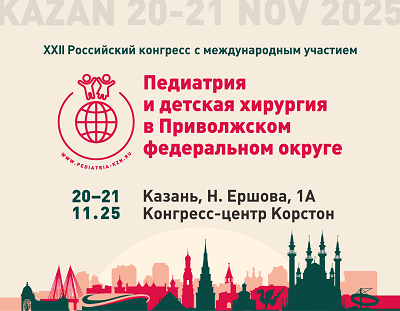A change in the type of neurogenic dysfunction as a result of treatment of children with neurogenic bladder subject to surgery for a spinal hernia during the newborn period
https://doi.org/10.21508/1027-4065-2022-67-2-83-93
Abstract
The most severe consequence of a spinal hernia, affecting the entire life of a person, is a spinal neurogenic bladder. Its symptoms limit the child’s socialization, and the problem of urination needs constant use of various aids. At the same time, despite many studies in neurology, there are no significant shifts in the possibility of restoring the function of urination in spinal patients.
Purpose. The aim of study is to analyze the long-term results of correction of neurogenic bladder in children treated depending on the type of dysfunction with a history of surgery for spinal hernia.
Characteristics of children and research methods. 100 patients with spinal neurogenic bladder aged 1–15 years were examined, urodynamic studies were used. Depending on the state of the detrusor and sphincter, groups of patients were identified, in each of which treatment lasting at least a year was selected.
Results. With a differentiated approach to the choice of therapeutic tactics, depending on the type of neurogenic bladder, the presence of vesicoureteral reflux, urinary tract infection, it was possible to reduce the level of detrusor hypertension, if any, or activate the function of the atonic bladder. Individual options for urinary diversion were developed. With long-term therapy that stabilizes detrusor, a change in the type of neurogenic dysfunction occurred within a year in 98 patients, which required repeated urodynamic examination to change treatment tactics.
Conclusion. Clinical manifestations of spinal neurogenic bladder do not always accurately indicate the type of dysfunction. During the growth of the child, as well as under the influence of treatment, there is a change in the type of neurogenic bladder. Urodynamic examination makes it possible to determine the state of the detrusor and sphincter — and to select a pathogenetically justified treatment option. In case of impaired urination, neurogenic bladder should be corrected with customized self-catheterization. Urodynamics should be controlled in spinal patients at least once a year to correct treatment.
About the Authors
S. S. NikitinRussian Federation
Petrozavodsk
N. B. Guseva
Russian Federation
Moscow
R. O. Ignatiev
Russian Federation
Moscow
S. L. Morozov
Russian Federation
Moscow
V. V. Dlin
Russian Federation
Moscow
References
1. Blaas H.-G.K., Eik-Nes S.H., Isaksen C.V. The detection of spina bifida before 10 gestation weeks using two- and three-dimensional ultrasound. Ultrasound Obstet Gynecol 2000; 16(1): 25–29. DOI: 10,1046/j.1469–0705,2000,00149.x
2. Trudell A.S. Diagnosis of spina bifida on ultrasound: always termination? Best Pract Res Clin Obstet Gynaecol 2014; 28(3): 367–377. DOI: 10,1016/j.bpobgyn.2013.10.006
3. Ben-Sira L., Garel C., Malinger G., Constantini S. Prenatal diagnosis of spinal dysraphism. Childs Nerv Syst 2013; 29(9): 1541–1552. DOI: 10,1007/s00381–013–2178–5
4. Myelodysplasia in children (organization and provision of specialized medical care): Guide for doctors. Edited by V.M. Rozinov. M.: Predanie, 2017; 220 (in Russ.)
5. Deryugin L.A. Urodynamic disorders of the lower urinary tract in fetuses. L.A. Deryugina. Detskaya khirurgiya 2007; 3: 30–34 (in Russ.)
6. Vishnevsky E.L., Pugachev A.G. Urinary incontinence in children. Plenum of the Board of the Russian Society of Urology, Jaroslavl’: Materialy. M., 2001; 179–189. (in Russ.)
7. Madersbaher H. The various types of neurogenic bladder disfunction: an update of current therapeutic conception. Paraplegia 1990; 28(4): 217–229. DOI: 10,1038/sc.1990,28
8. Olandoski K.P., Kolch V., Trigo-Rocha F.E. Renal function in children with congenital neurogenic bladder. Clinics 2011; 66(2): 189–195. DOI: 10,1590/s1807–59322011000200002
9. Larijani F.J., Moghtaderi M., Hajizadeh N., Assadi F. Preventing kidney injury in children with neurogenic bladder dysfunction. Int J Prev Med 2013; 4(12): 1359–1364
10. Guseva N.B., Nikitin S.S. Neurophysiological aspects of inorganic urination disorders in children, basic principles of diagnosis and treatment. Zhurnal Pediatriya im. G.N. Speranskogo 2017; 96(5): 137–143. (in Russ.)
11. Bavani A.G., Hanafi M.G., Sarkarian M. An investigation into the sensitivity of shear wave ultrasound elastography to measure the anterior bladder wall pressure in patients with neurogenic bladder. J Family Med Prim Care 2019; 8(4): 1342– 1346. DOI: 10,4103/jfmpc.jfmpc_84_19
12. Thomas D.T., Yener S., Kalyoncu A., Uluc K., Bayri Y., Dagcinar A. et al. Somatosensory evoked potentials as a screening tool for diagnosis of spinal pathologies in children with treatment refractory overactive bladder. J Childs Nerv Syst 2017; 33(8): 1327–1333. DOI: 10,1007/s00381–017–3393–2
13. Borch L., Rittig S., Kamperis K., Mahler B., Djurhuus J.C., Hagstroem S. No immediate effect on urodynamic parameters during transcutaneous electrical nerve stimulation (TENS) in children with overactive bladder and daytime incontinence- A randomized, double-blind, placebo-controlled study. Neurourol Urodyn 2017; 36(7): 1788–1795. DOI: 10,1002/nau.23179
14. Kroll P., Gajewska E., Zachwieja J., Sobieska M., Mańkowski P. An Evaluation of the Efficacy of Selective Alpha-Blockers in the Treatment of Children with Neurogenic Bladder Dysfunction — Preliminary Findings. Int J Environ Res Public Health 2016; 13(3): 130–133. DOI: 10,3390/ijerph13030321
15. Lee B., Featherstone N., Nagappan P., McCarthy L., O’Toole S. British Association of Paediatric Urologists consensus statement on the management of the neuropathic bladder. J Pediatr Urol 2016; 12(2): 76–87. DOI: 10,1016/j.jpurol.2016.01.002
16. Moeller Joensson I., Hagstroem S., Siggaard C., Bower W., Djurhuus J.C., Krogh K. Transcutaneous Electrical Nerve Stimulation Increases Rectal Activity in Children. J Pediatr Gastroenterol Nutr 2015; 61(1): 80–84. DOI: 10,1097/MPG.0000000000000802
17. Şekerci Ç.A., Işbilen B., Işman F., Akbal C., Şimşek F., Tarcan T. Urinary NGF, TGF-β1, TIMP-2 and bladder wall thickness predict neurourological findings in children with myelodysplasia. J Urol 2014; 191(1): 199–205. DOI: 10,1016/j.juro.2013.08.025
18.
Review
For citations:
Nikitin S.S., Guseva N.B., Ignatiev R.O., Morozov S.L., Dlin V.V. A change in the type of neurogenic dysfunction as a result of treatment of children with neurogenic bladder subject to surgery for a spinal hernia during the newborn period. Rossiyskiy Vestnik Perinatologii i Pediatrii (Russian Bulletin of Perinatology and Pediatrics). 2022;67(2):83-93. (In Russ.) https://doi.org/10.21508/1027-4065-2022-67-2-83-93











































